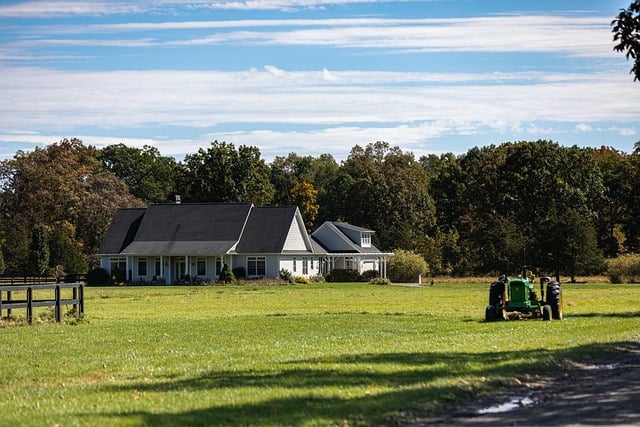Longboard riding offers an exciting way to explore, with a suitable board being crucial for newcomers. Start with learning fundamental techniques in flat areas, then navigate steeper inclines and more complex maneuvers. Begin with a beginner-friendly longboard featuring stability, balance, and adjustable components tailored to your style. Prioritize safety with quality protective gear and invest in sturdy, durable boards designed for endurance. Practice basic skills like turning, carving, and speed control to enhance enjoyment and build confidence. Longboards are versatile across various terrains, building endurance through gradual distance increases and regular training. Master basic tricks like carving, then progress to advanced maneuvers for creative expression and diverse experiences.
Introducing our comprehensive guide designed specifically for long rides on longboards—perfect for both seasoned riders and enthusiastic beginners. From understanding the basics of longboard riding to mastering advanced techniques, this article covers it all. We’ll help you choose the ideal longboard for your first ride and equip you with essential safety gear. Learn turning, carving, speed control, navigating different terrains, building endurance, and explore creative riding styles. Whether you’re a novice or looking to elevate your skills, these tips will transform your longboard experience.
Understanding Longboard Riding: Basics for Beginners

Longboard riding is a thrilling and unique experience, especially designed for those who want to embark on longer rides. For beginners, it’s essential to grasp the basics before jumping onto this smooth journey. The first step is to choose the right longboard for your needs; various designs cater to different terrains and riding styles. Whether you’re cruising through town or tackling downhill paths, a suitable board will make your ride more enjoyable and manageable.
Once you have your longboard, learn the fundamental techniques: pushing, carving, and turning. Pushing is the basic action of propelling yourself forward by applying pressure with one foot while gliding on the other. Carving involves smoothly turning the board by shifting your weight from side to side, creating a flowing motion. Beginners should start in flat areas, mastering these basics before advancing to steeper inclines and more complex maneuvers.
Choosing the Right Longboard for Your First Ride

When considering your first longboard ride, selecting the appropriate board is key. For beginners, look for a longboard for beginners designed with stability and ease-of-use in mind. These boards often feature wider platforms that provide better balance and larger wheels that absorb bumps, making them ideal for navigating varied terrain.
Consider the purpose of your rides—whether you plan to cruise casually or tackle downhill sections. Some longboards are specifically engineered for speed and agility, while others offer a smoother, more relaxed ride. Choose a board with a flexible deck for a comfortable ride and adjustable trucks to tailor your riding experience to your liking.
Essential Equipment and Safety Gear for Longboarders

When embarking on long rides with a longboard, ensuring you’re equipped with the right gear is crucial for a safe and enjoyable experience, especially for beginners looking to conquer distances. The essential equipment includes high-quality protective gear such as helmets, knee and elbow pads, and gloves. These are non-negotiable, providing vital protection against falls and potential injuries.
For beginners, investing in a sturdy longboard designed for long rides is key. Look for boards with robust construction, suitable wheel sizes for different terrain, and trucks that offer both stability and maneuverability. Additionally, carrying a repair kit tailored for longboards can be immensely helpful during unexpected detours or breaks in the hustle and bustle of urban exploration.
Mastery of Basic Techniques: Turning, Carving, and Speed Control

Mastery of basic techniques like turning, carving, and speed control is essential for any longboarder, especially those new to the sport. For beginners on a longboard for beginners, understanding how to turn smoothly and safely is crucial. This involves developing a feel for balancing your weight and leaning into turns, rather than relying solely on the board’s flexibility. Carving, or flowing turns, adds to the enjoyment of longboarding and allows riders to navigate curves with grace and control.
Speed control is another fundamental skill that helps beginners manage their rides effectively. Learning to gradually accelerate and decelerate ensures a smooth journey, enhances safety, and improves overall control. With practice, these basic techniques not only make longboarding more enjoyable but also open up opportunities for advanced maneuvers, making it a game-changer for any aspiring longboarder.
Navigating Different Terains: From Smooth to Rough

Longboards are designed to handle a variety of terrains, making them an ideal choice for those embarking on longer rides. For beginners, navigating different surfaces can be a bit daunting, but with the right board, it becomes an enjoyable experience. Smooth, well-maintained roads offer a breeze for cruising and carving, allowing riders to master basic techniques like turning and stopping effortlessly.
As you venture onto rougher terrain, including gravel paths or urban streets with cracks, a longboard’s robust construction and larger wheels become valuable assets. These features absorb shocks, providing a smoother ride and ensuring control during unpredictable surfaces. For beginners, practicing on different terrains helps build confidence and skill, making the transition from beginner to expert that much easier.
Building Endurance: Tips for Longer Rides

Building endurance is a crucial aspect of preparing for and enjoying longer rides on your longboard, especially for those new to this exciting activity. Start by gradually increasing the distance and duration of your sessions. Begin with shorter distances and focus on maintaining a steady pace. Over time, you can build up to longer rides, giving your body time to adjust and adapt.
Consistency is key; regular practice will enhance your stamina and make longboarding more enjoyable. Incorporate interval training into your routine by alternating between slower, steady-paced segments and shorter bursts of faster speed. This technique improves cardiovascular fitness and muscle endurance. Remember to warm up before each ride and stretch afterward to prevent injuries and promote recovery.
Advanced Skills: Tricks, Dancing, and Creative Riding Styles

For those new to longboarding, mastering basic tricks and techniques is essential for building confidence on your longboard for beginners. Start with simple maneuvers like carving, where you gracefully weave through turns, adding fluidity and style to your rides. Then, progress to more advanced skills such as ollies, kickflips, and 360s. These tricks not only enhance your control but also allow you to express yourself creatively on the board. Dancing on a longboard involves intricate footwork and rhythmic turns, transforming your ride into a captivating performance.
As you develop these skills, explore various riding styles that cater to long rides. Consider flow riding, where you maintain a smooth, continuous motion, or freestyle riding for a more dynamic experience. Experiment with different techniques like sliding, where you control speed by breaking and regaining traction, adding an exciting element to your longboard adventures. With practice, these advanced skills will not only make your longboarding experience more enjoyable but also prepare you for various terrains and challenges ahead.
